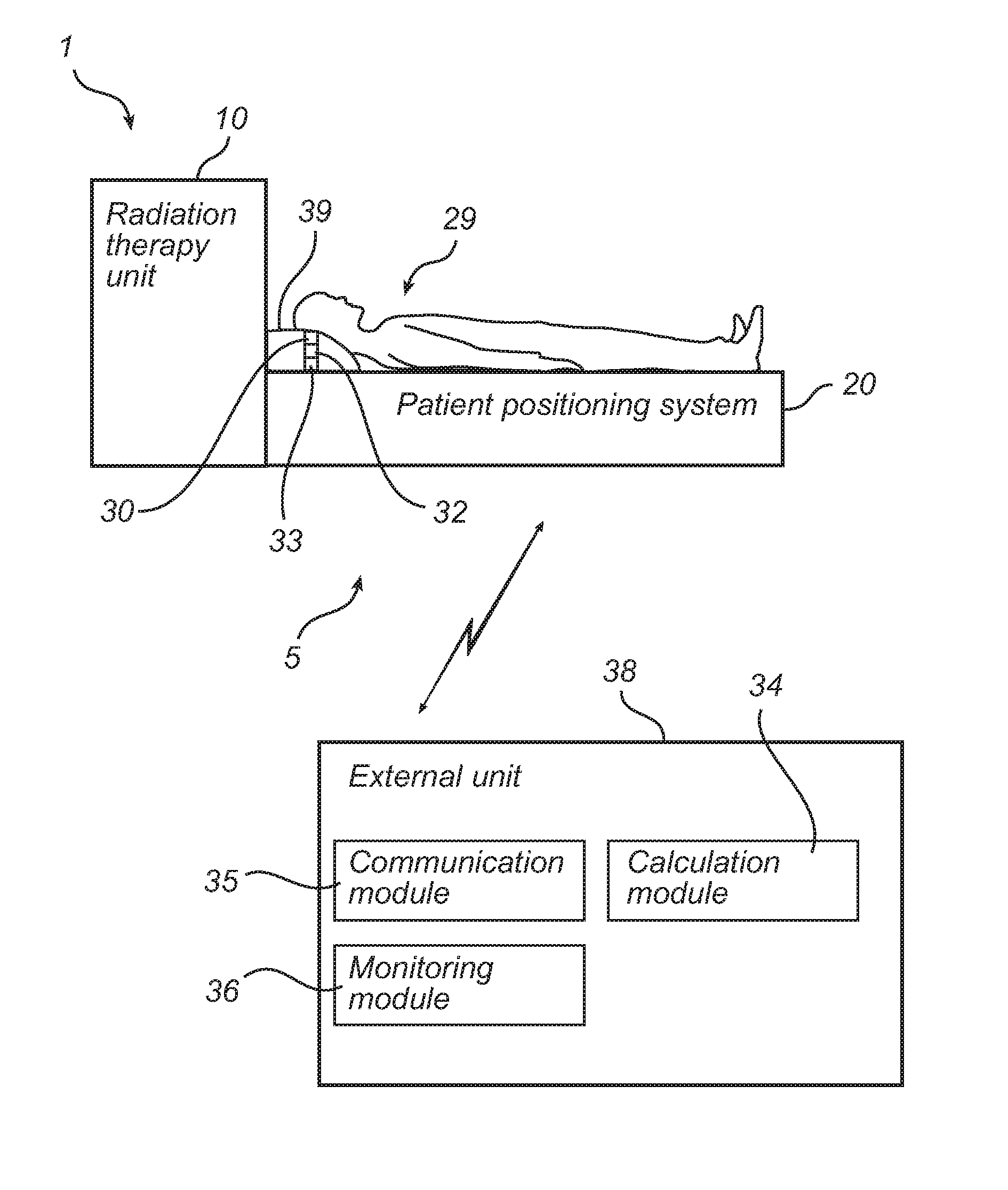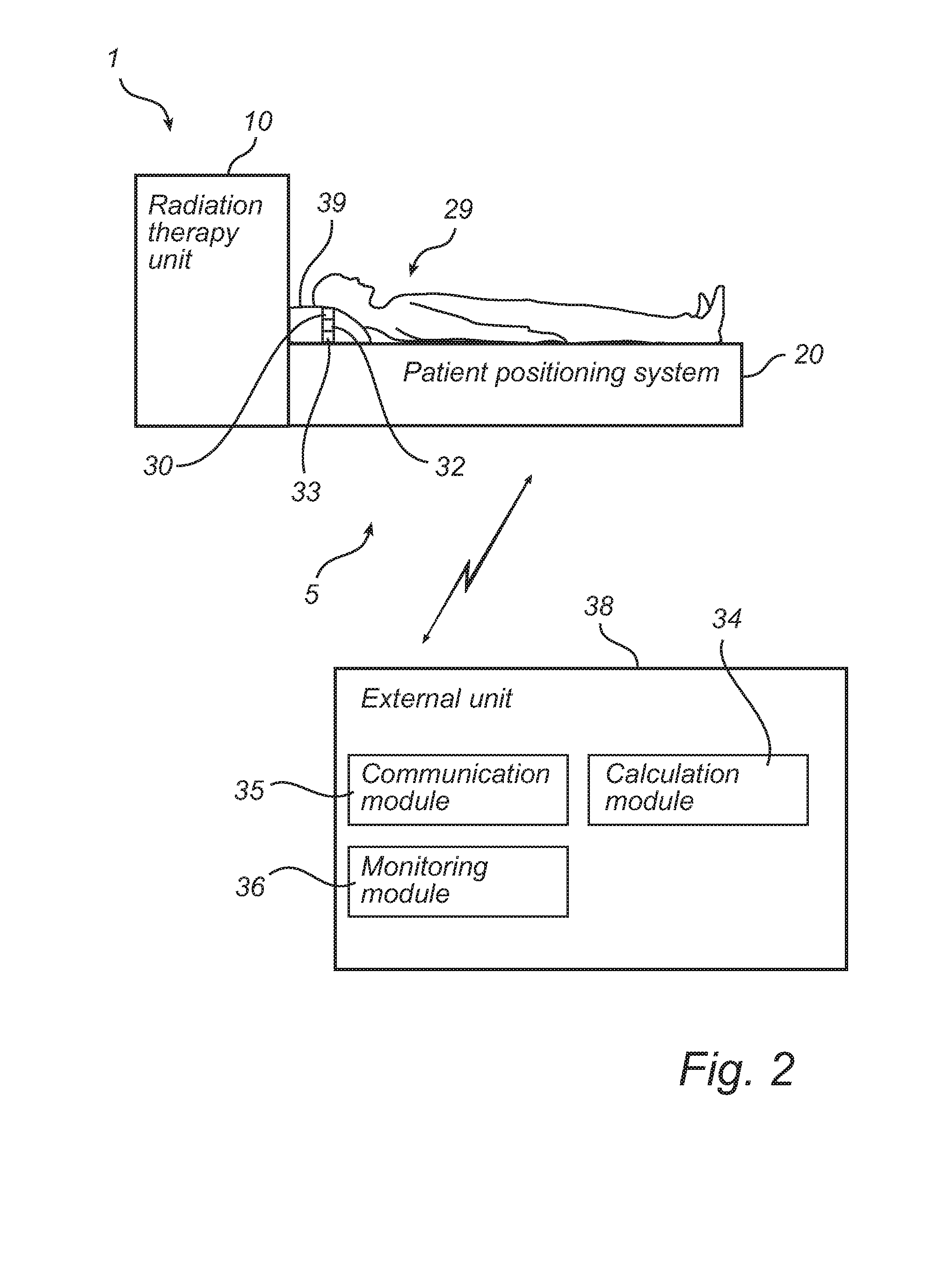Intra-fraction motion management system
a motion management system and motion management technology, applied in the field of radiation therapy, can solve the problems of radiation reaching tissue-destructive levels, destroying cancer cells, and normal structure included in the target volume being subject to damage, so as to avoid potential damage to surrounding tissue
- Summary
- Abstract
- Description
- Claims
- Application Information
AI Technical Summary
Benefits of technology
Problems solved by technology
Method used
Image
Examples
Embodiment Construction
[0051]With reference to FIG. 1, a radiation therapy system 1 for which the present invention is applicable comprising a radiation unit 10 and a patient positioning unit 20 will be discussed. In the radiation unit 10, there are provided radioactive sources, radioactive source holders, a collimator body, and external shielding elements. The collimator body comprises a large number of collimator channels directed towards a common focus point, in a manner as is commonly known in the art.
[0052]The collimator body also acts as a radiation shield preventing radiation from reaching the patient other than through the collimator channels. Examples of collimator arrangements in radiation therapy systems applicable to the present invention can be found in WO 2004 / 06269 A1, which is hereby incorporated by reference. However, the present invention is also applicable to radiation therapy systems using other arrangements for collimating radiation into a fixed focus point, such as is disclosed in U....
PUM
 Login to View More
Login to View More Abstract
Description
Claims
Application Information
 Login to View More
Login to View More - R&D
- Intellectual Property
- Life Sciences
- Materials
- Tech Scout
- Unparalleled Data Quality
- Higher Quality Content
- 60% Fewer Hallucinations
Browse by: Latest US Patents, China's latest patents, Technical Efficacy Thesaurus, Application Domain, Technology Topic, Popular Technical Reports.
© 2025 PatSnap. All rights reserved.Legal|Privacy policy|Modern Slavery Act Transparency Statement|Sitemap|About US| Contact US: help@patsnap.com



